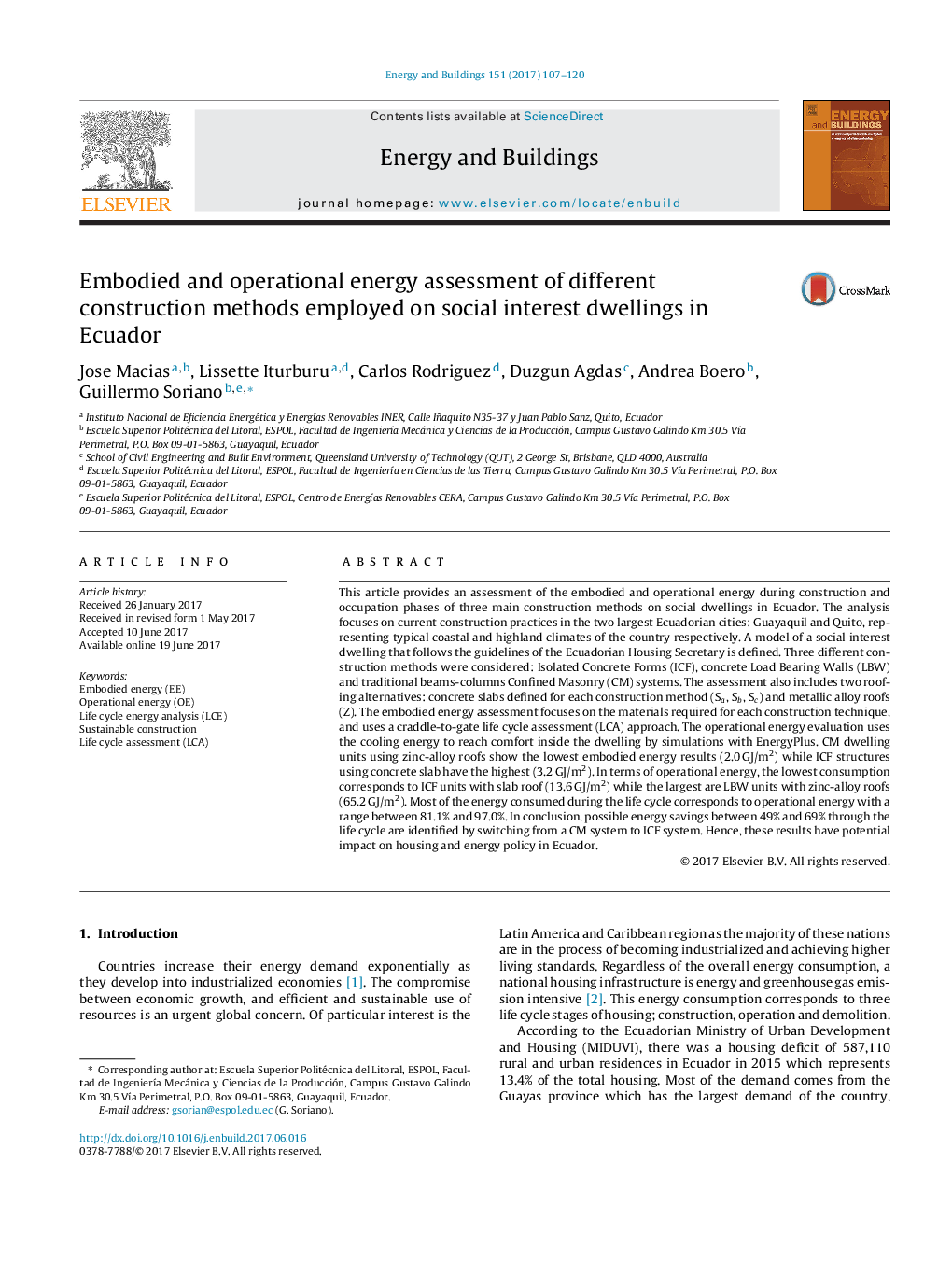| کد مقاله | کد نشریه | سال انتشار | مقاله انگلیسی | نسخه تمام متن |
|---|---|---|---|---|
| 6481054 | 1428939 | 2017 | 14 صفحه PDF | دانلود رایگان |
This article provides an assessment of the embodied and operational energy during construction and occupation phases of three main construction methods on social dwellings in Ecuador. The analysis focuses on current construction practices in the two largest Ecuadorian cities: Guayaquil and Quito, representing typical coastal and highland climates of the country respectively. A model of a social interest dwelling that follows the guidelines of the Ecuadorian Housing Secretary is defined. Three different construction methods were considered: Isolated Concrete Forms (ICF), concrete Load Bearing Walls (LBW) and traditional beams-columns Confined Masonry (CM) systems. The assessment also includes two roofing alternatives: concrete slabs defined for each construction method (Sa, Sb, Sc) and metallic alloy roofs (Z). The embodied energy assessment focuses on the materials required for each construction technique, and uses a craddle-to-gate life cycle assessment (LCA) approach. The operational energy evaluation uses the cooling energy to reach comfort inside the dwelling by simulations with EnergyPlus. CM dwelling units using zinc-alloy roofs show the lowest embodied energy results (2.0Â GJ/m2) while ICF structures using concrete slab have the highest (3.2Â GJ/m2). In terms of operational energy, the lowest consumption corresponds to ICF units with slab roof (13.6Â GJ/m2) while the largest are LBW units with zinc-alloy roofs (65.2Â GJ/m2). Most of the energy consumed during the life cycle corresponds to operational energy with a range between 81.1% and 97.0%. In conclusion, possible energy savings between 49% and 69% through the life cycle are identified by switching from a CM system to ICF system. Hence, these results have potential impact on housing and energy policy in Ecuador.
Journal: Energy and Buildings - Volume 151, 15 September 2017, Pages 107-120
